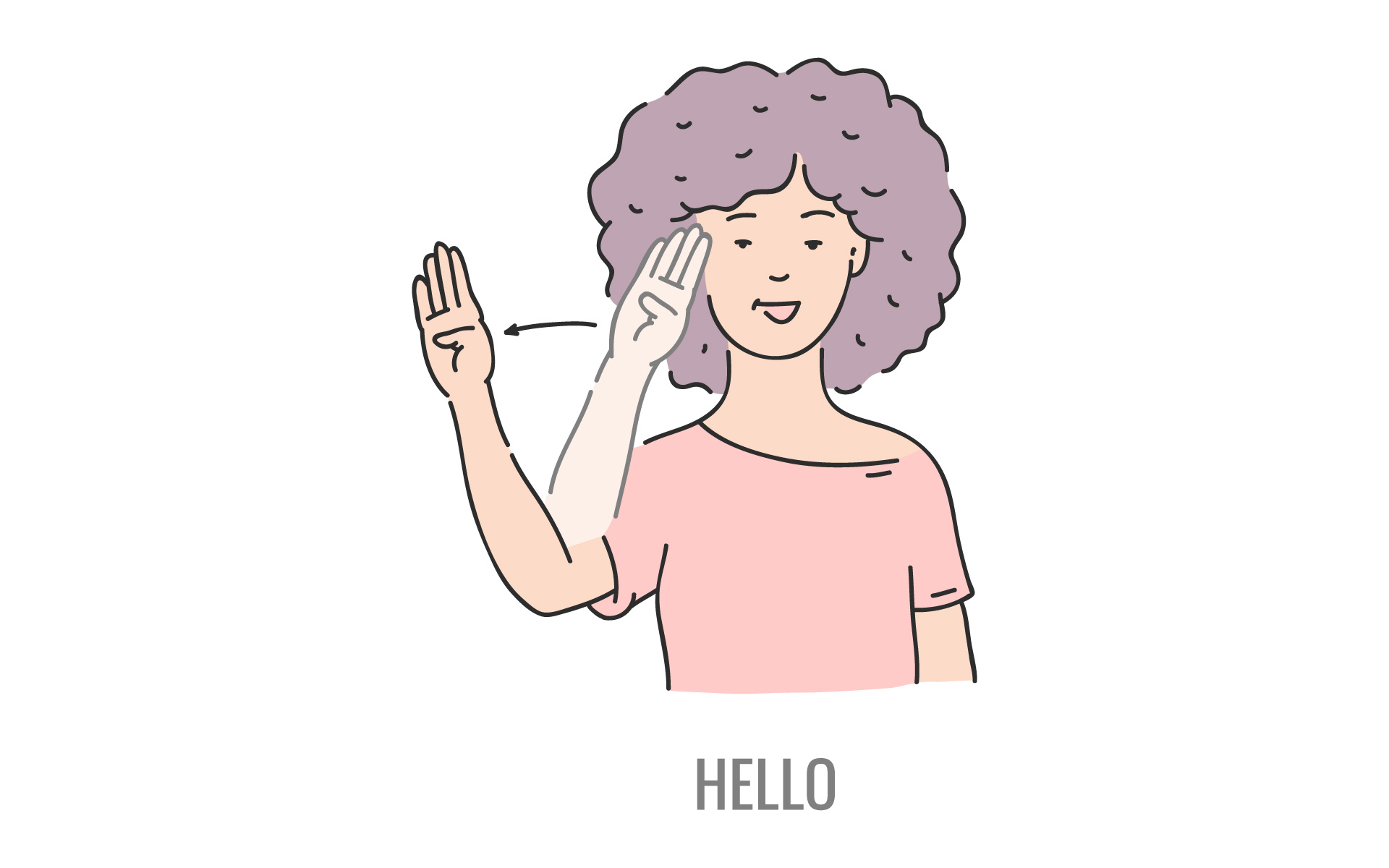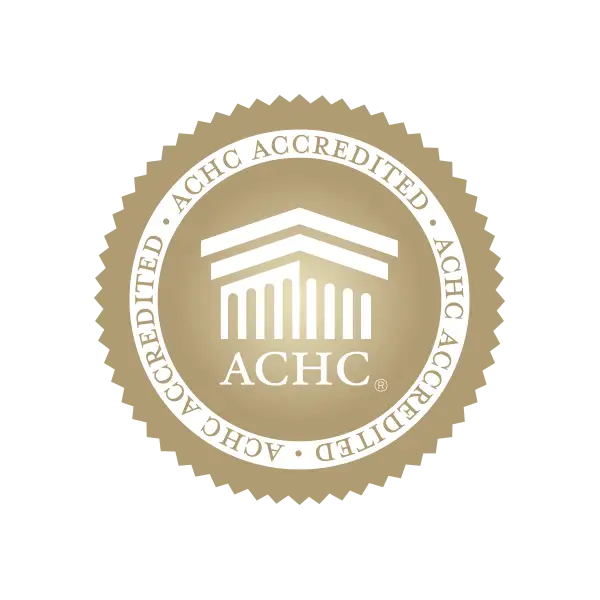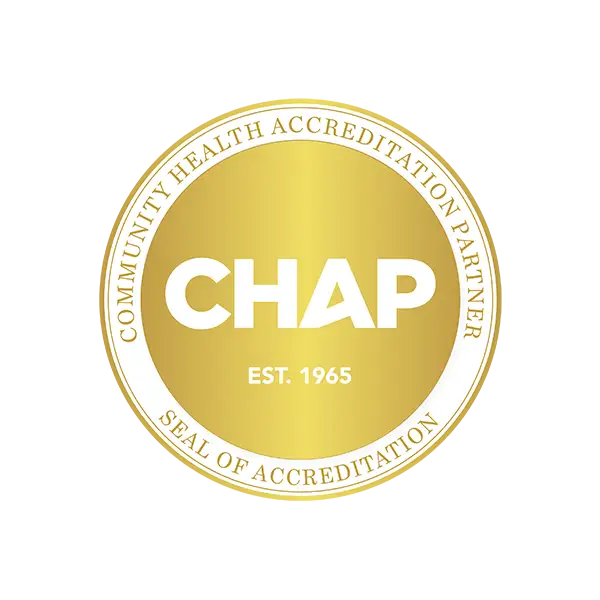
American Sign Language (ASL) is a visual language and form of communication used within the deaf and hard of hearing communities and beyond. American Sign Language has the same linguistic properties as spoken languages, grammar that differs from English, and movements of the hands and face express it.
It is common for infants in the US to be tested for hearing loss at birth, so parents can encourage and begin language learning as soon as possible. Our language skills develop in concert with cognitive and social skills, so teaching your hard-of-hearing or deaf child basic sign language for babies as they develop is a great way to learn and grow together. In fact, nursery care programs often teach basic sign language to kids in their care to help with communicating basic needs.
There are a variety of sign languages used around the world. American Sign Language is used throughout North America, including the U.S. and English-speaking Canada. American Sign Language basics include the alphabet, which are basic sign language signs for the 26 letters. Fingerspelling, or spelling words through sequences of signs, is common. However, ASL also has sign language basic phrases and words that help speed up communication.
Basic American Sign Language Parameters
There are five parameters associated with effectively communicating or signing in ASL: handshape, palm orientation, location, movement, and non-manual markers or signals (a.k.a., NMM or NMS). Understanding the parameters is essential to learning ASL, as each can affect the conveyed meaning and comprehension. Let’s look at how each parameter influences sign language basic phrases.
Handshape
The handshape refers to the hand configuration, and this parameter has over 55 handshapes. Understanding how handshape affects basic ASL signs is important because a handshape change can result in a different or no meaning. It’s similar to how one character or sound in spoken words can change the meaning, like “way” and “why”.
A similar example in basic sign language is the ASL words for “school” and “impossible” – both have the same parameters of location, movement, and palm orientation, yet the handshapes differ. So, the different handshape is what distinguishes the words from each other.
Palm Orientation
The palm orientation in basic American Sign Language refers to the palm’s placement or orientation. For example, turning your hand to face up or down, facing you, or facing away from you, etc., all signify different meanings for basic sign language words or phrases. For example, the basic sign language words for “maybe” and “balance” have the same handshape, location, and movement parameters. However, the palm orientation distinguishes the two from each other in basic sign language.
Location
Another parameter essential to sign language basics is the location of the hand, i.e., on your chin, forehead, in the air, on the chest, etc. The location of the hand doesn’t signify an independent meaning, as it is more a part of basic words being expressed in sign language.
For example, basic sign language for the words “apple” and “onion” have the same handshape, movement, and palm orientation. However, the location of the hand (middle of the cheek for “apple” and by the temple for “onion”) signifies the different meanings of the similar signs.
Movement
Your hand movement in basic sign language is another parameter, such as upward, downward, backward, forward, diagonally, wave, zigzag, etc. For example, the basic ASL signs for “airplane” and “fly” have the same handshape, palm orientation, and location. However, the movement is different and distinguishes the two from each other.
Non-Manual Markers/Signals (NMM or NMS)
The last parameter is non-manual markers or signals, i.e., NMM or NMS. These are the expressions and signals given by the face (ex., eyebrows, eyes, nose, and lips), shoulders (ex., raising), head (ex., nods, tilts, and shakes), and body (ex., tilting) that demonstrate meaning in combination with hand expressions. Non-manual markers are used to represent the tone, emotion, and intent in a visual form.
These five parameters for basic sign language words are all used within a signer’s “space”. This space refers to the area in which most signs are made, which is in front of the body from a few inches above the head to the abdomen or belly button.
Most Important Basic Sign Language Phrases
Learning sign language takes time and practice. You can begin by learning some basic ASL signs to get started. By mastering a handful of the basic sign language signs, you will create a foundation for growth as the art of the language is learned.
Below, we will describe and show you ten basic words in sign language. Written instructions are helpful in teaching sign language basic phrases, but the video demonstrations are the true teachers.
Hello
The word “hello” in ASL begins with raising your hand, palm facing out, four fingers held straight and together with your thumb curled into your palm. The movement is to touch your four fingertips to your forehead with palm facing out, like a salute, then straightening your hand and arm back to a 90 degree angle keeping the handshape and palm orientation intact.
How Are You?
Signing “how are you?” in basic sign language uses two hands. Begin by bringing both hands in fists with the thumbs facing up in front of your chest with your palms facing in. Brings the knuckles together at a tilt and use a twisting motion to turn your thumbs in the opposite direction. Finish the sign by bringing one hand out after the twisting motion to point at the person you are speaking to and raising your eyebrows to indicate the question.
Nice To Meet You
To express “nice to meet you” in basic American Sign Language, bring your hands up in front of your chest with the top hand facing palm down on top of the other hand with palm facing up (fingers are straight and held together, pointing in opposite directions). Next, bring the palms down together in a sliding motion across each other and finish with both hands positioned in front of the shoulders in fists with the index finger pointing up and palms facing toward each other. Finally, bring the two hands together so folded fingers touch, and finish the sign by using one of the hands to point at the person to whom you’re speaking.
What Your Name?
Asking someone’s name in basic sign language begins with one hand out in front of the chest, palm open, facing out, and pushing forward. Next, raise both hands up in front of the chest and in a fist with the index and middle fingers pointing straight up and palms facing out.
Bring the two hands together in front of your chest so that the fingers on one hand are above and at an angle to the other hand (still fisted with fingers pointing outward at a slight angle). Bring the top two fingers down to tap the bottom two fingers twice on the middle knuckle. Finish by opening hands with palms up and bringing them back together (palms still up!) in front of your chest with two short waves, i.e., moving open hands side to side twice with palms still facing up.
My Name Is…
Similar to the sign language basics for asking someone’s name, saying “My name is …” in ASL begins with touching your chest with an open hand, palm facing in. Next, repeat the hands fisted with index and pointer fingers facing out at an angle and tapping the middle knuckles of each hand together twice. Next, begin spelling your name using the ASL alphabet.
Thank You
The sign for “thank you” in ASL is relatively easy to execute. Begin with your hand open, fingers together, and thumb held slightly apart. Bing the hand up, palm facing inward, to touch the tips of your four fingers to the chin briefly before bringing the hand back out in front of your face and dropping it to finish the sign.
Deaf
To indicate “deaf” in basic sign language words, begin by bringing one hand up, fingers fisted with the index finger pointing up, palm facing out. Bring the index finger to your mouth (pointing), palm still facing out, and tap your lips. Next, maintaining the same hand and palm positions throughout, bring the index finger back in an arc to touch your ear.
Hearing
To express “hearing” in ASL, begin by bringing your hand up in a fist with your index finger straightened. Bring your pointed finger fist in front of your mouth, turned sideways with the palm facing in toward your face. Make an up and down circular motion with the finger in front of your mouth and still pointed sideways.
Hard of Hearing
“Hard of hearing” in basic sign language begins by raising one hand into a fist with the index and pointer finger straightened. Keep the palm facing sideways with the two fingers pointing away from you. Tap the two fingers once in front of your chest and move them up and over in an arcing motion to tap down again – much like drawing a rainbow.
Good-Bye
Saying goodbye in ASL is pretty simple. Begin by bringing your hand up in front of you, palm and fingers open and facing outward. Bring the top four fingers down in a waving motion by bending them only at the hand knuckles three times.
Helpful Basic Sign Language Resources
Learning basic sign language takes time and practice. Fortunately, plenty of resources are available to help you and your loved ones with the journey, including the following:
- Lifewire: 16 Free Sign Language Learning Resources
- Smart ASL: Top 10 & 25 American Sign Language Signs for Beginners
- Kids Course: Sign Language for Kids
There are also plenty of health care resources for children with speech or language disabilities, like the home health speech therapists at KidsCare Home Health. We specialize in home health therapy for kids with disabilities and are committed to serving families nationwide with C.A.R.E. (commitment, accountability, results, and ethics). Contact a KidsCare Home Health specialist today.


















